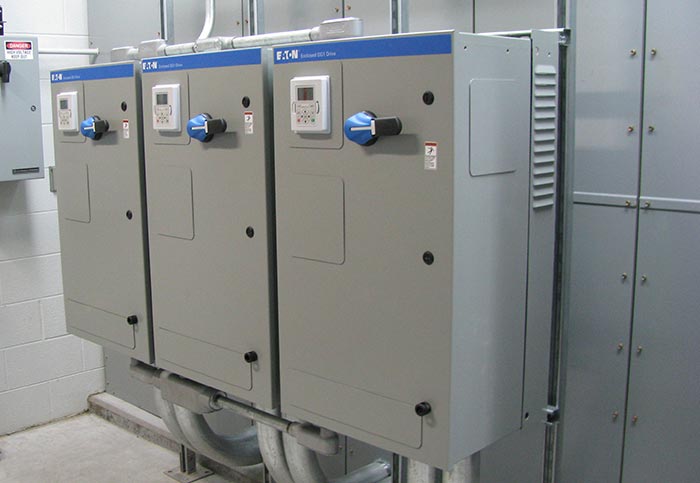In terms of efficient pump operation, proper maintenance of pumping systems remains essential, but new technologies offer more cost-controlling options than those installed 20 years ago. For years, the pump was overlooked as an opportunity to improve the performance and reliability of heating, ventilation and air conditioning (HVAC) systems. System operators relied on old, but reliable practices. Building designers used best practices from years prior. When pumps failed, technicians simply replaced them with new ones with the same characteristics.
Things are changing rapidly. Manufacturers have made improvements in designs and construction materials and many advancements in HVAC operations are being applied to pumps and their operations. Levels of operating efficiency are reaching levels unheard of even 10 years ago. System performance is also improving with an increase in reliability and a reduction of maintenance requirements. Here are more key questions and answers about how variable frequency drives (VFDs) relate to pumping systems today.
 Image 1. VFDs can increase the performance, reliability and efficiency of HVAC systems with advanced algorithms that can continuously optimize energy savings. (Image courtesy of Eaton)
Image 1. VFDs can increase the performance, reliability and efficiency of HVAC systems with advanced algorithms that can continuously optimize energy savings. (Image courtesy of Eaton)Q: How are VFDs driving changes to systems?
A: A new generation of intelligent pump controls, VFDs can offer improvements in pump reliability as well as system performance. They can adjust better to system load changes, control pump operations and provide control over a wider range of load conditions and offer smoother pump startups.
Q: Are there innovative ways to impact energy efficiency?
A: A growing trend in the motors and drives market is a transition from single, large horsepower motors running HVAC systems to a less centralized model in which smaller motors are used to run loads throughout a system.
Q: How does changing to smaller, less centralized systems impact operations and maintenance?
A: Reducing the reliance on one major system running everything offers a backup for individual zones, improving reliability and uptime. The system can be more energy efficient because of the ability to fine-tune each zone of the system based on individual needs. One large system can only be controlled by a few factors without complex control schemes and additional equipment.
Q: What else can impact energy efficiency?
A: An increase in the use of VFDs can impact energy efficiency providing the ability to ramp systems up or down according to the demand of the facility. The energy efficiency benefits of VFDs are well known, but they also can offer comfort benefits as well.
Q: Does this affect the energy costs?
A: Motors represent a great deal of untapped, relatively easily obtained energy savings. They can be the key to high efficiency. We can see a significant reduction in energy costs simply by adding a VFD into the same application where an across-the-line starter or a contactor once was. Also, an often-overlooked benefit of VFDs is that the constant low airflow helps create a more comfortable environment.
Q: How else are manufacturers tuning systems to impact energy efficiency?
A: Advanced algorithms that automatically and continuously optimize the energy savings from VFDs in a given application are also impacting energy efficiency. Certain algorithms can continuously fine-tune the electrical output to reduce energy spent while maintaining desirable conditions within a facility. These algorithms are becoming more standardized and more critical.
For more than 40 years, VFDs have been a critical component of efforts to improve efficiency. Their fundamental usage has remained the same, while technology has evolved—yielding drives that are better able to reduce energy consumption and improve reliability while extending equipment life.
Today, new algorithms deliver energy savings and stability, and establish a new level of efficiency for commercial buildings. A novel control algorithm for VFDs reduces the input power of an induction motor used to drive a variable torque load. The algorithm adjusts the motor’s operating point based on its load conditions, provides power savings and improves energy efficiency.
End users are driving these trends as they seek the lowest energy costs while maintaining a comfortable environment.
Q: For existing systems, what can be retrofitted to modify energy consumption and impact costs?
A: For their part, contractors can play the same role on the retrofit side. Some retrofits are easier than others, but there is flexibility to provide solutions to fit customers’ needs. For example, manufacturers are developing VFD products that have virtually the same footprint as a typical across-the-line product. That allows full VFD functionality inside the same footprint.


